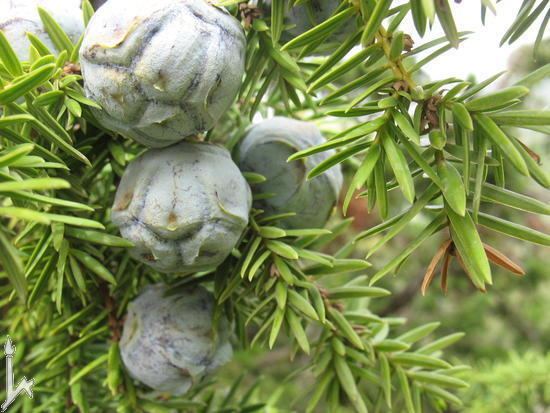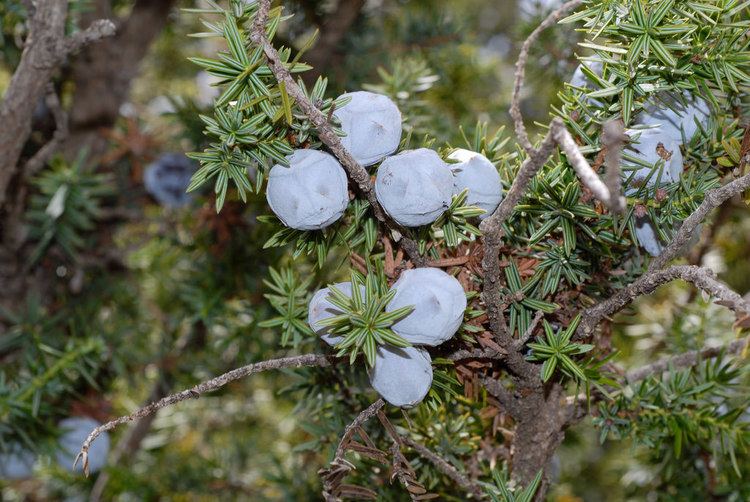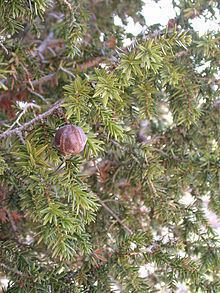Higher classification Juniper | Division Pinophyta Scientific name Juniperus drupacea Rank Species | |
 | ||
Similar Juniper, Juniperus excelsa, Juniperus foetidissima, Juniperus oxycedrus, Juniperus phoenicea | ||
Juniperus drupacea syrian juniper
Juniperus drupacea, the Syrian juniper, is a species of juniper native to the eastern Mediterranean region from southern Greece (Parnon Oros, Peloponnese), southern Turkey, western Syria, and Lebanon, growing on rocky sites from 800–1700 m altitude.
Contents

Description

Juniperus drupacea is the tallest species of juniper, forming a conical tree 10–25 m tall, exceptionally up to 40 m, and with a trunk up to 1–2 m thick. It has needle-like leaves in whorls of three; the leaves are green, 5–25 mm long and 2–3 mm broad, with a double white stomatal band (split by a green midrib) on the inner surface. It is usually dioecious, with separate male and female plants.
The seed cones are the largest of any juniper, berry-like but hard and dry, green ripening in about 25 months to dark purple-brown with a pale blue waxy coating; they are ovoid to spherical, 20–27 mm long and 20–25 mm diameter, and have six or nine fused scales in 2-3 whorls, each scale with a slightly raised apex. The three apical scales each bear a single seed, but with the three seeds fused together into a single nut-like shell. The male cones are produced in clusters (unlike any other juniper) of 5-20 cones together, yellow, 3–4 mm long, and fall soon after shedding their pollen in early spring.

Because of its distinct cones with the seeds fused three together and the clustered male cones, it has sometimes been treated in a distinct genus of its own as Arceuthos drupacea (Labill.) Antoine & Kotschy, but genetic studies have shown it is fairly closely related to Juniperus macrocarpa and Juniperus oxycedrus.
